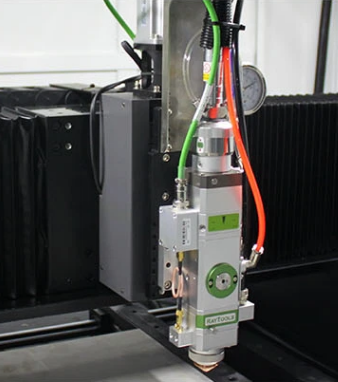High-tech lasers and advanced polishing techniques are integral to the manufacture and maintenance of a wide range of high-precision components used in fields such as aerospace, medical devices, and optics. Here are some detailed aspects of high-tech lasers and polishing:
High-tech lasers
Types of high-tech lasers:
Fiber lasers: Used for cutting, welding, and marking due to their high precision and efficiency.
CO2 lasers: Common cutting and engraving applications, especially for non-metallic materials.
Ultrafast lasers (femtosecond and picosecond): Used for micromachining and medical procedures due to their ability to ablate materials with minimal thermal damage.
Applications:
Material processing: Lasers are used to cut, weld, drill, and engrave a wide range of materials, including metals, plastics, and ceramics.
Medical devices: Precision cutting and welding of components such as stents and surgical instruments.
Electronics: Micromachining processes such as photolithography in semiconductor manufacturing.
Aerospace: Manufacture and repair components with high precision and minimal material waste.
Advantages:
High precision and controlled material removal.
Ability to process hard and brittle materials.
Minimal thermal deformation and high-quality surface finish.
Increased automation and efficiency of the manufacturing process.
Advanced Polishing Technologies
Chemical Mechanical Polishing (CMP):
Combines chemical etching and mechanical polishing.
Widely used for surface planing in semiconductor manufacturing.
Magnetorheological Finishing (MRF):
Utilizes magnetically controlled fluids containing abrasive particles.
Provides highly accurate surface finishes for optical components.
Ultrasonic Polishing:
Uses ultrasonic vibrations to assist the polishing process.
Suitable for complex and hard-to-reach areas.
Laser Polishing:
A laser beam is used to melt a thin layer of the surface of the material and then re-solidify to a smoother surface.
Suitable for metals and some ceramics with high precision and high speed.
Applications:
Optics: Polishing lenses, mirrors and other optical components to achieve high accuracy and clarity.
Aerospace: Finishing turbine blades and other critical components for improved performance and life.
Medical Devices: Polishing implants and surgical instruments to ensure biocompatibility and functionality.
Tool and Die Manufacturing: Achieve a fine surface finish on molds and dies to produce high-quality products.
Advantages:
Achieve ultra-smooth and defect-free surfaces.
Improve mechanical and optical properties of components.
Extend the life and performance of parts.
Reduce friction and wear in mechanical applications.
Integration of Laser and Polishing
In many high-tech manufacturing processes, laser and polishing technologies are often integrated to produce components with exceptional precision and surface quality. For example, laser cutting or welding may be used to initially shape a part, followed by advanced polishing to achieve the desired surface finish. This combination ensures that components meet the stringent quality and performance standards required by industries such as aerospace, medical devices, and electronics.

